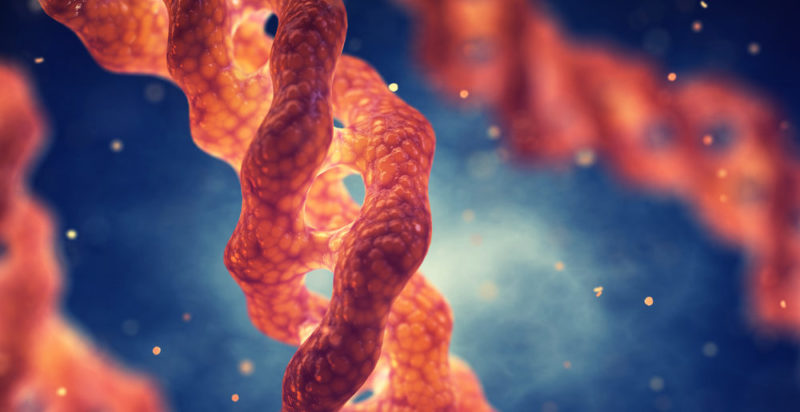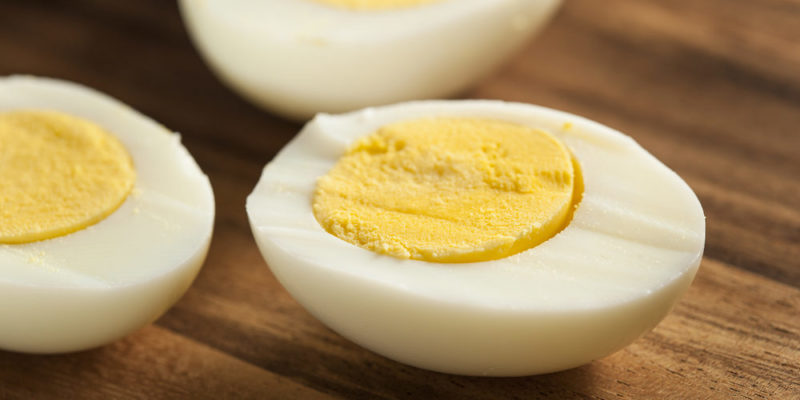We explain what proteins are, their characteristics and functions. Also, what are their types, sources and recommended intake.
What are proteins?
Proteins are macromolecules present in all living organisms and constitute a fundamental nutrient for human beings .
They are macromolecules formed by the union of several amino acids that are acquired through food . Amino acids are organic molecules that at one end of their structure have an amino functional group (-NH 2 ), while at the other they have a carboxyl functional group (-COOH).
Proteins are essential to fulfill various functions of the body , such as the formation or repair of muscles , bones and other tissues. They also intervene in cell division and in the defense of the organism.
Low levels of protein in the body can cause diseases such as anemia, especially in the stages of pregnancy or early childhood.
Protein Characteristics

- Proteins are made up of different types of amino acids linked together, forming a long chain with a complex structure. The sequence of the amino acids determines the shape of the protein and, therefore, the function.
- There are around twenty different types of amino acids, of which eight are essential or indispensable because the body cannot manufacture them and must acquire them through food. The remaining twelve types of amino acids are those that the body can synthesize or manufacture from essential amino acids.
- Some organs or tissues have higher protein content than others. However, the importance of the protein is not related to its concentration but to its function. Some of the most important proteins, such as enzymes and hormones, are found in reduced proportions.
- Proteins are very specific in terms of the function they perform and must also be stable in the environment where they perform their activity.
protein structure
Proteins have different levels of organization in their structures that have been used to study them. Four main types of structures are represented:
- primary structure . It is the sequence of amino acids of the peptide chains, which do not reveal information about the conformation but about the composition of these chains. Peptide chains can be straight or bent. The easiest way to describe a protein is by using its primary structure.
- secondary structure . It is the spatial arrangement of the different types of peptide chains of the protein. The presence of hydrogen bonds determines the formation of local folds, such as alpha helices or beta sheets.
- Tertiary structure . It is the folding of the peptide chain on itself, which generates a globular-type structure. This folding occurs on the already existing secondary structure.
- Quaternary structure . It is the structure of proteins that have more than one chain of amino acids with an existing tertiary structure. That is, it is the union of different peptide chains. Proteins that have a quaternary structure are called oligomeric proteins. An example of this type of protein is hemoglobin.
Protein functions
The functions that proteins can perform are very varied and essential for the correct functioning of the organism, such as composing the cellular structures of living beings and making chemical reactions possible.Among the main functions are:
- They make certain biological processes happen faster. This process is called catalysis. For example: enzymes (they are proteins that catalyze some chemical reactions).
- They control body processes, such as growth and metabolism. For example: insulin (hormone that regulates glucose levels in the human body ).
- They protect the body from diseases. For example: antibodies, as is the case with IgG generated to combat Covid-19.
- They transport various substances in the body, such as oxygen , iron and lipids. For example, hemoglobin, transferrin, and lipoproteins.
- They make up the structure of various tissues, such as skin and hair. For example, collagen and keratin.
- They perform muscle contraction movements. For example, myosin and actin.
protein types
There are two main groups of proteins:
- simple proteins . They are made up only of amino acids or their derivatives. For example, globular proteins form tightly coiled, or fibrous, nearly spherical structures that have an elongated structure.
- Proteins conjugated with other compounds . They are combined with another component that is not an amino acid and which is called a “prosthetic group”. For example, lipoproteins (which combine with lipids), glycoproteins (which combine with sugars ), or chromoproteins (which combine with pigments).
protein denaturation
 Protein denaturation is a process in which, under certain conditions, physicochemical changes occur that cause the loss of their secondary, tertiary, and quaternary structures. Only the polypeptide chain remains, without any three-dimensional structure.
Protein denaturation is a process in which, under certain conditions, physicochemical changes occur that cause the loss of their secondary, tertiary, and quaternary structures. Only the polypeptide chain remains, without any three-dimensional structure.The most common factors that generate denaturation are sudden changes in temperature , pH and hydrostatic pressure (pressure exerted by the liquid). On the other hand, when certain organic solvents such as acetone or toluene are added, protein denaturation can also occur.
An example of this process occurs with the cooking of an egg , in which the white (which is very rich in albumin) denatures when exposed to high temperatures. The white of the egg ceases to be transparent, fluid and soluble to become white, solid and insoluble, as occurs with a fried or hard-boiled egg.
protein sources
Protein sources are diverse and each organism obtains and synthesizes them differently . For example, ruminant animals (such as cows) need to consume a large amount of vegetables to cover the adequate level of protein. Non-ruminant animals (such as humans) need to consume animal derivatives, legumes, seeds, and nuts.
excess protein
 Excess protein of animal origin can pose health risks due to the concentration of saturated fats they contain, which contribute to increasing cholesterol and clogging arteries, causing cardiovascular disorders, obesity and affecting the kidneys or liver.
Excess protein of animal origin can pose health risks due to the concentration of saturated fats they contain, which contribute to increasing cholesterol and clogging arteries, causing cardiovascular disorders, obesity and affecting the kidneys or liver.The body cannot store excess protein. To eliminate this surplus, it produces an alteration in the body's pH that makes it more acidic than necessary. The process of counteracting and balancing the pH can overload and damage some vital organs.
daily protein intake
The recommended daily intake of protein varies according to several factors , such as the intensity of activity, age, health status, among others. The recommended protein dose, which is not the same as the amount of total food needed, is calculated according to the concentration of protein that a food contains, and its suggested proportions are:
- For people who perform moderate activity . They should consume between 0.8 and 1 gram of protein per kilo of their body weight, which is equivalent to about 56 to 90 grams of protein per day for an average weight individual.
- For sports people or with great activity . They should consume between 2 and 2.5 grams of protein per kilo of their body weight, which is equivalent to about 100 and 160 grams of protein per day for an individual of average weight.
The above content published at Collaborative Research Group is for informational and educational purposes only and has been developed by referring reliable sources and recommendations from experts. We do not have any contact with official entities nor do we intend to replace the information that they emit.
Veronica is a culture reporter at Collaborative Research Group, where she writes about food, fitness, weird stuff on the internet, and, well, just about anything else. She has also covered technology news and has a penchant for smartphone stories. .
Leave a reply
Your email address will not be published. Required fields are marked *Recent post

Sport: What Is It, Types, Risks, Features, Characteristics and Examples

Dogs: Emergence, Features, Characteristics, Feeding and Breeds

Story: Definition, Elements, Structure, Features and Characteristics

